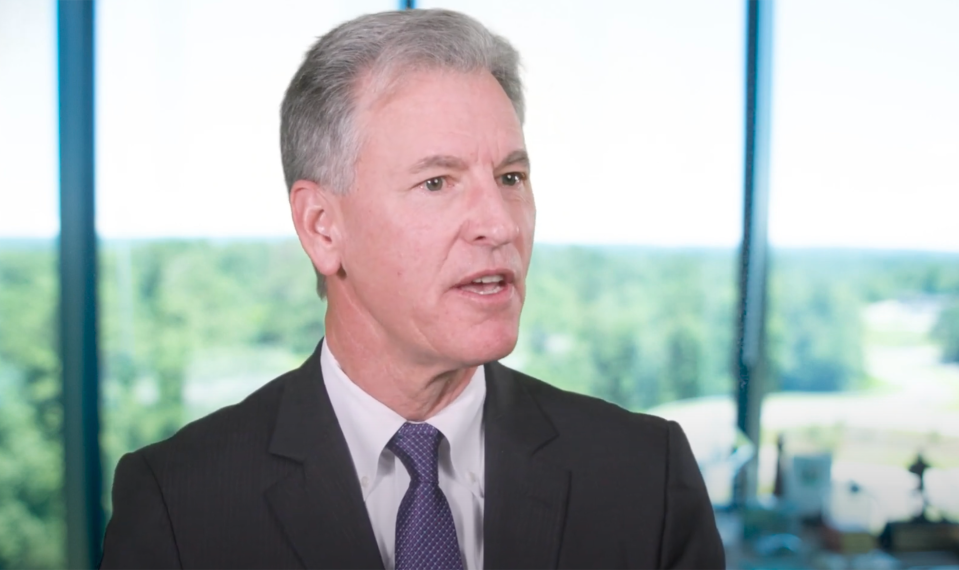Cheryl Miller used to spend her weekends poring over information from various sources to determine the productivity of her team.
At the time, Miller, vice president of therapy operations for Encompass Health, oversaw about 100 therapists companywide.
“I wanted to figure out a way to look at each therapist to see how patients were responding to their treatments,” she recalled of the process she used more than a decade ago. “I created this spreadsheet where I downloaded all this information from different places. It would take my entire weekend.”
Fast forward to today, and all Miller has to do is pull up an application on her desktop where she can determine the effectiveness of therapy companywide or down to the individual, looking at anything from case mix to patient satisfaction scores and functional improvements.
Miller can then use this data to improve processes and patient outcomes, she said.
The app Miller now uses is one of many on Encompass Health’s proprietary platform, Beacon. Created by the company’s IT team in an effort to pull different data sources together, Beacon allows leadership access to relevant data to support different business goals and initiatives.
“Over 15 years ago, we began collecting data from many of the large software systems being used by our company,” said Darren Freeman, director of business intelligence and data warehousing. “But at the time, that exchange of data inside the company was done in Microsoft Excel and email. We made a conscious decision to consolidate that information and get it in a place that would allow leadership teams to really use it.”
Beacon apps, such as Miller’s therapy one, allow leadership to see only the data that’s relevant to their business need in an easy-to-read dashboard in Beacon.
Collecting the data
As in all businesses, but particularly healthcare, data comes from a variety of sources, whether it’s patient electronic medical records, human resources management systems, patient satisfaction scores or other workflow systems.
In 2004, the IT team started building a data warehouse to not only store all that data in one place, but also to create “data marts” to join together information from disparate systems. After collecting the data for several years, Rusty Yeager, chief information officer, said they needed to bring all it together in a meaningful way for leadership to use. That was the genesis of Beacon.
“We already had the data warehouse; it was this gold mine of information that could help improve processes and improve patient care,” he said. “What we needed was a miner’s pan to get at the gold. So, we laid a software visual interface layer over the data warehouse that puts information in front of people who can improve patient care and business outcomes. It’s there to support our caregivers and our business leaders.”
Tying it to a business need
Deployed in 2010, Beacon started with one app which tracked labor productivity, and by the end of the year it had grown to five. To date, there are more than 45 apps, with the number growing as a business need arises. That’s the only criteria when creating a new Beacon app, Freeman said—it must meet a business need.
“We built the first application and showed it to executive management,” Freeman recalled. “Once others saw what the capabilities were, the flood gates opened. We don’t build one, though, unless there is a business need. We want to align these solutions with company goals.”
If it’s determined there is a business need, Freeman and his team work with leadership to see what information needs to be collected for the application. Other applications have been built to provide analysis for case management, nursing, quality, patient experience, labor, turnover, volume, sales and marketing, supply chain and more.
Improving processes, building best practices
Instead of poring over spreadsheets on the weekends, Miller can quickly access the information she needs within the therapy Beacon app, as can therapy leaders across the company. All of the therapists have access to the data, which Miller said helps them identify and create best practices across the company.
“We can use the information to drive the organization,” she said. “That’s what this app was built for. We can strategically use the data to improve effectiveness and efficiency. We can use it for compliance to see that we’re providing the right amount of therapy, and that’s a financial driver, too, because if we’re not, we don’t get paid.”
As the industry changes, so do the Beacon apps, Yeager added. Freeman and his team have become quick to develop new ones to fulfill a need. The COVID-19 pandemic is one example.
Within two weeks after COVID-19 was declared a pandemic, Freeman’s team built an app to track testing in the company’s hospitals.
“We got that going very fast,” Yeager said. “We were showing all test results within about two weeks, and the app updates every hour in near real time. Being able to do that so quickly makes us extremely agile.”
It also makes Encompass Health unique in the post-acute space in its ability to collect data specific to the setting of care, and then to visualize it for leadership teams, so they can implement meaningful improvements companywide.
“That’s probably the biggest way I use it,” Miller said. “I can look at patient satisfaction, for example, over different regions, and drill down and see who is best at what. We can look at those best practices they’re using to share enterprise-wide. It helps us drive best practices and prioritize projects.”
Learn more about how Encompass Health is using data to create predictive analytics to improve patient outcomes and reduce the overall cost of care.
The content of this site is for informational purposes only and should not be taken as professional medical advice. Always seek the advice of your physician or other qualified healthcare provider with any questions you may have regarding any medical conditions or treatments.



